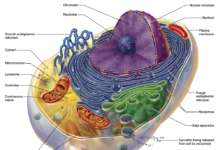By Jim English
Sudden cardiac death, resulting from untreated rapid ventricular fibrillation, is the leading cause of death in the United States, affecting about 400,000 people each year and claiming the lives of about 70 percent of them. Sudden cardiac death occurs most often in people who have had heart attacks (myocardial infarction) in the past, but can also occur in young people who were entirely well until the time of death. Ischemia, caused by a lack of oxygen to the heart due to narrowing of the coronary arteries, can lead to cardiac arrest, a heart attack from a sustained ventricular arrhythmia.
A number of natural agents have been shown to prevent the occurrence of arrhythmias while supporting normal heart rhythm and improving cardiac function. Some of these benefits include a positive inotropic effect (increased strength of heart contractions), increased myocardium (heart) tissue oxygenation, and scavenging of free radicals. Working by different complementary mechanisms, these natural compounds produce anti-arrhythmic actions and benefit cardiac functions without the side effects associated with some antiarrhythmic drugs.
Berberine
Berberine, the active ingredient found in the herb goldenseal (Hydrastis canadensis) has been shown to be beneficial for ventricular arrhythmias caused by lack of oxygen. Evidence also suggests that berberine administration can help prevent the onset of re-entrant ventricular tachyarrhythmias and sudden coronary death after myocardial ischemic damage.
The effects of berberine on individuals with ventricular tachyarrhythmias showed that 62 percent of patients had 50 percent or greater, and 38 percent of patients had 90 percent or greater, suppression of ventricular premature contractions. No severe side effects were observed from berberine therapy. In humans with refractory congestive heart failure, berberine produced several significant changes: a 48 percent decrease in systemic and a 41 percent decrease in pulmonary vascular resistance, along with a 28 percentde crease in right atrium and 32 percent decrease in left ventricular end-diastolic pressures. A measurable increase in cardiac index (45 percent), stroke index (45 percent), and left ventricular ejection fraction (56 percent) was also observed.
Coenzyme Q10
Myocardial biopsies of patients with various cardiac diseases showed a significant CoQ10 deficiency in up to 75 percent of cases. Research has shown that orally administered CoQ10 can improve functioning of myocardial tissue, strengthening the heart’s contractions and making it beat more strongly and more regularly. CoQ10 also acts as an antioxidant to control free radicals produced during cardiac interventions (including angioplasty, thrombolysis, and surgery).
Accordingly, CoQ10 has been used in the treatment of different heart disorders that include arrhythmias related to primary cardiomyopathies or secondary forms of heart failure. A 1998 study observed patients with acute myocardial infarction. For 28 days one group received 120 mg of CoQ10 and the other group received a placebo. After treatment, total arrhythmias were only 9.5 percent in the CoQ10 group compared to 25.3 percent in the placebo group. CoQ10 produced a significant reduction in angina pectoris and left ventricular dysfunction. Non-fatal infarction and cardiac deaths also were significantly lower in the CoQ10 group.
Taurine
Taurine modulates the activity of cAMP and affects enzymes in heart muscle that contribute to contractility. Taurine also plays a role in the metabolism of calcium and may affect entry of calcium into heart muscle cells where it is essential in the generation and transmission of nerve impulses. Research shows that taurine prevents arrhythmogenesis by limiting cardiac hypertrophy and calcium overload of the myocardium. Taurine also protects the heart against reperfusion-induced arrhythmias via its properties as a membrane stabilizer and as an oxygen free radical scavenger.
Arrhythmias characteristic of acute myocardial ischemia may be due to loss of intracellular taurine. Researchers found that intravenous administration of taurine prevented arrhythmias caused by digitalis. Taurine also inhibited the drop in potassium levels inside heart cells, which can cause electrical instability and arrhythmias. Supplemental taurine has been shown to reduce the occurrence of myocardial infarction and to lower elevated blood pressure by reducing sympathetic tone.
References
1. “Arrhythmias/Rhythm Disorders,” Fact sheet, National Heart, Lung and Blood Institute, NIH Publication No. 95-2264, September 1995.
2. Managing Ventricular Fibrillation in Patients with Silent Myocardial Ischemia Reprinted from Medical Sciences Bulletin 9/13/99, published by Pharmaceutical Information Associates, Ltd.
3. D. Sheffield, et al. Results from the Psychophysiological Investigation of Myocardial Ischemia (PIMI) Study. Ref: 48th annual meeting of the American College of Cardiology. March, 1999.
4. Podrid PJ, Lampert S, Graboys TB, Blatt CM, Lown B. Aggravation of arrhythmia by antiarrhythmic drugs – incidence and predictors. Am J Cardiol 1987;59:38E-44E.
5. Echt DS, Liebson PR, Mitchell LB, et al. N Engl J Med 1991;324:781-8.
6. Teo KK, Yusuf F, Furberg CD. JAMA 1993;270:1589-95.
7. Huang W. Ventricular tachyarrhythmias treated with berberine. Chung Hua Hsin Hsueh Kuan Ping Tsa Chih 1990;18:155-156,190.
8. Marin-Neto JA, Maciel BC, Secches AL, Gallo Junior L. Clin Cardiol 1988;11:253-260.
9. Folkers K., Vadhanavikit S., Mortensen S.A. In: Proc. Natl. Acad. Sci., U.S.A., vol. 82(3), pp 901-904.
10. Mortensen S.A., Vadhanavikit S., Muratsu K., Folkers K. (1990) Int. J. Tissue React., Vol. 12 (3), pp 155-162.
11. Singh RB; Wander GS et al Cardiovasc Drugs Ther, 12(4):347-53 1998 Sep.
12. Sebring, L. A. and Huxtable, R. J. Sulfur Amino Acids: Biochemical & Clinical Aspects, 1983.
13. Hernandez, J.; Artillo, S.; Serrano, M. I.; and Serrano, J. S. Res. Commun. Chem. Patho. Pharma., 43(2):343-346, 1984.
14. Bousquet, P.; Feldman, J.; Bloch, R.; and Schwartz, J. Eur. J. Pharmacol, 98:269-273, 1984.
15. Wessberg, P.; Hedner, T.; Hedner, J.; and Jonason, J. Life Sci., 33:1649-1655, 1983.
16. Finley RJ; Inculet RI; et al. Surgery, 99(4):491-500 1986 Apr.













